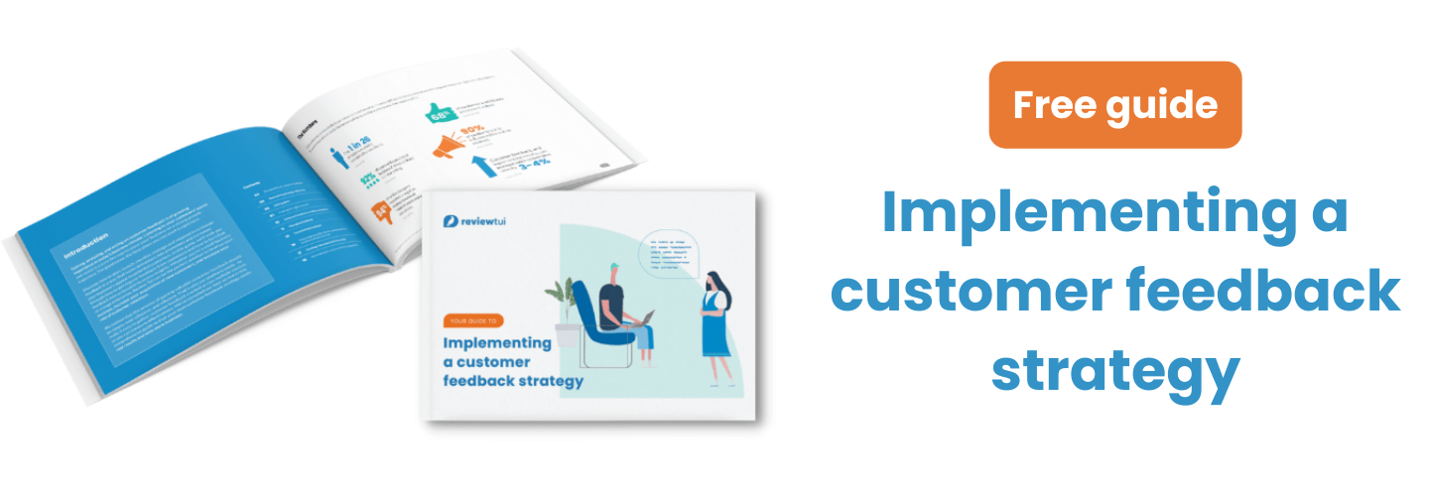Explicit and implicit customer feedback - what’s the difference?
Businesses get customer feedback every day. From suggestion slips dropped in a box to surveys filled out online, there’s a sense of familiarity with these forms of customer feedback. Yet customer feedback is more complex than this, and it’s not always as obvious as a rudely worded rant on Google! Like any form of human communication, there are overt forms and subtextual communication methods. In this article, we will explore the myriad of customer feedback methods so you’re better equipped to learn from your customers, even when they’re not shouting their thoughts from the rooftops. There are two main forms of customer feedback; explicit and implicit. Let’s quickly look at the difference between them.
Explicit customer feedback
This type of customer feedback is obvious and provided openly by the customer. In an everyday setting, this feedback is often given face-to-face, over the phone or through a customer feedback survey. The customer knows they’re giving the business feedback on their performance.
Implicit customer feedback
Harder to identify but arguably more important the implicit customer feedback is implied, and not directly given. A customer's actions (or lack thereof) will provide approximate assertions that a business can use to infer the experience. A prime example is a customer choosing to move to a competitor after buying from you.
When developing a customer feedback programme it’s a good idea to cover both bases, especially as the two can sometimes overlap and/or conflict. For example, an employee at a restaurant may see a customer make a face when tasting a dish, but the individual responds that everything is fine when asked. Which piece of feedback is likely to be more valuable to the establishment?
Which is customer feedback?
Both categories provide invaluable customer feedback to a business. Only by collecting both types will a business be able to see the full picture of their customer happiness, and whether their business is succeeding in delivering a good experience.
A business that relies too heavily on explicit feedback, while ignoring the implicit is doomed to failure. A business could have a very high NPS rating, but also a high turnover of customers. By analysing those opposing data points a business can pinpoint a gap in their customer analytics. What could be causing this high attrition rate when everyone is happy? Are you surveying the right customers? Is the NPS score more valuable to the business than the loss of customers?
As you can see there’s no one type of customer feedback and one isn’t necessarily more valuable than another. In order for customer feedback to truly succeed a business needs to implement a wide-ranging strategy that seeks to capture its many forms.
What forms does customer feedback come in?
We’ve highlighted a couple of ways customer feedback can materialise. And while it’s almost impossible to capture and analyse them all there are a few different ways you can monitor and capture explicit and implicit feedback to better your business. In this next section, we’ll explore a few of the most common methods available today.
Explicit feedback types
Social monitoring/social listening
Platforms that feature social monitoring capabilities can help a business harness indirect explicit feedback. That’s the category of feedback that is explicitly given but not necessarily directly to the business it affects. Sites like Hootsuite, Mention and Sprout Social enable you to track mentions of your brand and see what the public thinks.
Customer feedback surveys
Arguably the most explicit and direct form of customer feedback, the survey is a mainstay of customer service divisions across the world. By inviting your customers to share their feedback, using a customer feedback platform, you're giving them a chance to share their experiences and guide your company’s development towards a better customer experience.
Review platforms
Third-party review sites enable customers to share their feedback publicly to influence another person’s buying decision. Google reviews, Yelp, and Trip Advisor are all well-known examples of such sites. Some businesses want these to be the last place they find out about an issue because, as well as fixing the issue that caused the complaint the business now has PR damage control to conduct.
Implicit feedback types
Sales data
Using an established sales pipeline and CRM will enable you to monitor how many customers repeat purchases from you. If a good number of customers come back then it can be inferred that they enjoyed the experience the first time and that your service and offering met their expectations.
Referrals
NPS asks explicitly ‘How likely are you to recommend us?’ but the act of a referral is the more valuable and implicit act of doing just that. If someone recommends that a friend or family member buys from you then they’re tying their reputation and judgment to the interaction that person has with your brand. If you don’t meet the new customer’s expectations then the referrer’s judgment is put into doubt. That’s why an actual, real-life referral is one of the best implicit indicators of customer satisfaction out there.
Pageviews
With a CRM like HubSpot, businesses are able to see which pages customers visit most frequently. This can be beneficial when trying to ascertain whether life with your product/service is easy for the customer. Frequent trips to the FAQ, Help Centre or Knowledge Base may indicate that the user is trying to troubleshoot issues. If they’re having to do this too often they may become frustrated and leave.
How can I harness more feedback types?
In order to fully harness implicit and explicit feedback types, it helps to have a robust customer feedback strategy in place. You can do this by investing in feedback tools, training and a culture of curiosity. By instilling a customer-centric mindset in your business you can attune team members to be aware of, and responsive, to all feedback types.
While gathering explicit feedback through the likes of customer surveys and postal questionnaires is important it is also essential for customer service teams to also receive insights from other business divisions on customer feedback metrics. Working with sales to understand attrition rates, measuring customer referrals and analysing social media mentions alongside marketing will help to form a holistic customer feedback strategy, and view of the business.
Download our free digital guide on implementing a customer feedback strategy in your business to get started on building and understanding a good customer feedback strategy.




